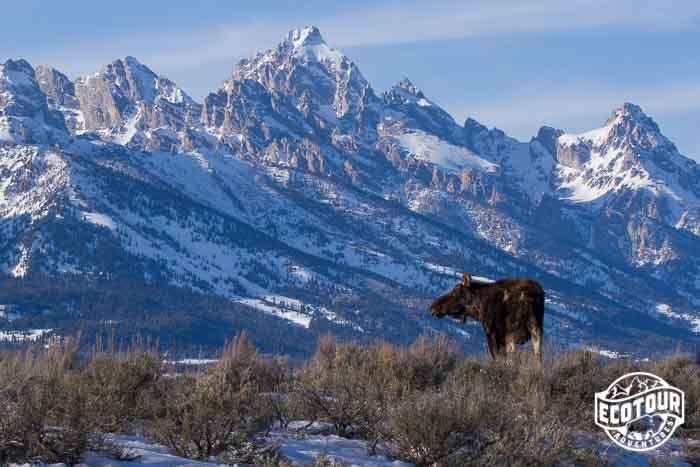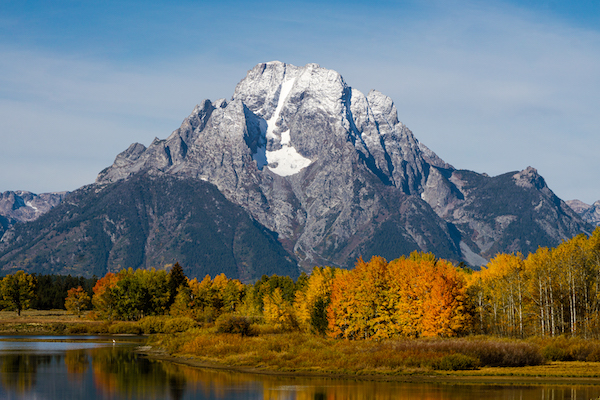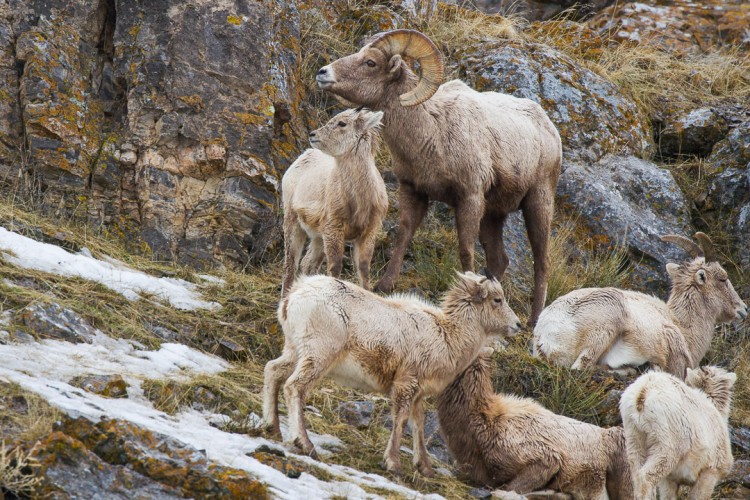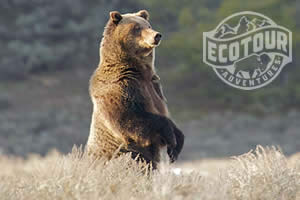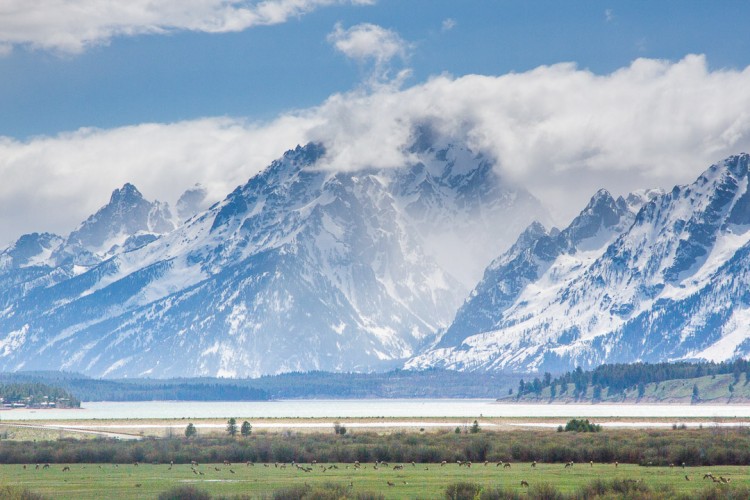
Life is flourishing across the Jackson Hole Valley and green meadows of Yellowstone National Park. Elk and moose calves have been spotted, and the first newborn bear cubs of spring are romping around Grand Teton and Yellowstone National Parks. Though snow still remains in the high country, an amazing transformation has occurred in the valleys as wildflowers burst forth, offering nectar to buzzing insects, songbirds and even hungry bruins.
Late May marks a shift from scarcity to abundance across the Greater Yellowstone Ecosystem. Plants are growing vigorously, providing nutrient and calorie dense forage which facilitates fast antler growth and rich milk to rapidly growing baby mammals. Predators, with their own young to feed, are also benefiting from this flush of life.
We’ve had an exciting month of wildlife observations while out exploring Yellowstone and Grand Teton National Parks. From bighorn to beavers, great gray owls to grizzlies and gray wolves, this spring has been an unforgettable one. Read on to learn more!
Late May is calving season!
By Late May, many of our big game herds have migrated to the parturition sites where they were born in preparation for having their own calves. Elk who wintered on the National Elk Refuge, are now spread out throughout Yellowstone and Grand Teton National Parks, and last week we observed our first spotted elk calf. Just days old, the calf walked unsteadily through an open meadow near the forest edge within Grand Teton National Park.
Moose calves have also been observed on our Grand Teton wildlife safaris, and, in contrast to elk, follow their mother closely for protection. Mother moose are extremely protective and may fight to defend their calves against danger, perceived or real. To avoid a dangerous encounter, be sure to follow park regulations and remain at least 25 yards from any animal, 100 yards from predators like bears and wolves.
Grizzly Cubs emerge in Grand Teton and Yellowstone National Parks
May has been the month of the grizzly during our wildlife and photography tours of Jackson Hole and Yellowstone. Both adult and baby grizzlies have been observed, including several bears with cubs of the year in tow.
Wildlife Tour Guide Verlin Carlton Stephens captured this footage of a grizzly and her two young cubs playing on a Grand Teton Safari last week. Verlin previously worked for the Interagency Grizzly Bear Study Team and has extensive knowledge of bears and Yellowstone.Having never seen the world before, cubs are adventurous and curious, romping around with their mother close by. Like moose, grizzly sows are also extremely protective of cubs and must be respected by keeping at least a 100 yard distance from the animals.
Yellowstone Opens for the Summer
Earlier this month, the south entrance to Yellowstone National Park opened for the year, and we are now guiding full day and multi day Yellowstone Tours from Jackson Hole. Dunraven Pass from Canyon Village to Tower Village and the Beartooth Highway into Montana from Yellowstone’s Lamar Valley are also open. These high mountain roads provide a wonderful opportunity to view the remaining snow from our deep winter.
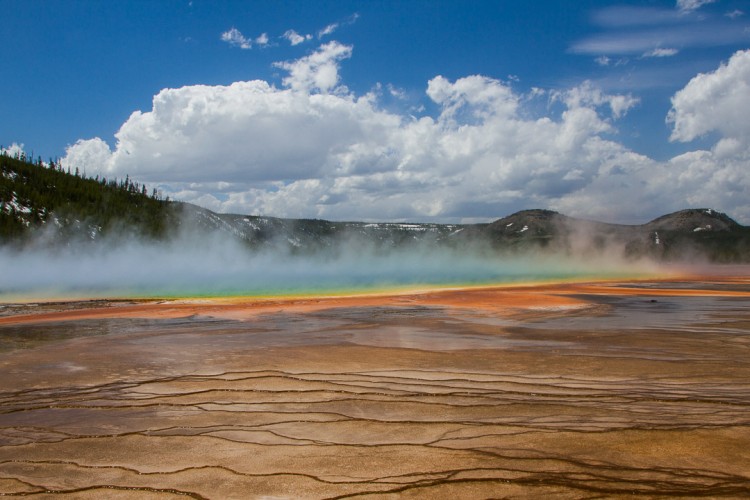
Due to a partial road collapse, the Grand Loop Road north of the Artist’s point turn and south of North Rim Drive is limited to one lane travel and delays are expected. Stay tuned to our Facebook page for updates on the closure.
Wolf Sightings on Ecotour Adventures Multi-day
Though wolves are found in both Grand Teton and Yellowstone National Parks, The Lamar Valley of Yellowstone is one of our favorite locations to find them! Last week guide Laura Krusheski found wolves from the Lamar Canyon Pack feeding on an elk kill during a multi day wildlife tour. Yellowstone is home to around 100 wolves, who were reintroduced in 1995 after a 60 year absence.
Busy Beavers
As lakes and rivers of Yellowstone and Grand Teton become ice free, beaver activity has increased, as these charismatic rodents build dams in an attempt to hold back snowmelt. In some areas they succeed, flooding meadows and creating quality riparian habitat for moose, songbirds, young trout, and other species. Retaining water in spring aids in hydrating the landscape throughout the summer, which is often dry.
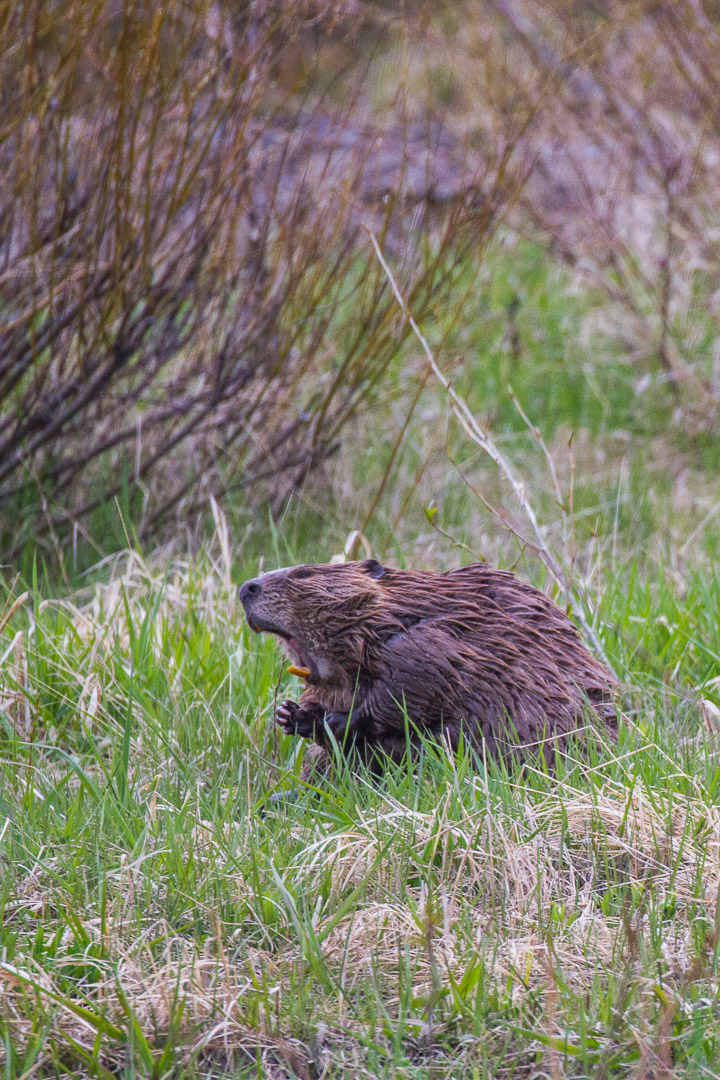
Birds flock to Yellowstone
One of our favorite bird species, harlequin ducks, have returned from their winter along the coast of the Pacific Northwest. Currently foraging in the LeHardy’s rapids of the Yellowstone River, these whitewater specialists swim and dive underwater confidently throughout the cascading rapids, foraging for small insects in the river bottom.
Last week after counting 17 harlequins, we headed north into the Hayden Valley to find 8 different duck species along the Yellowstone River, golden and bald eagles, and Swainson’s hawks. Over 300 different species of birds call Yellowstone home.
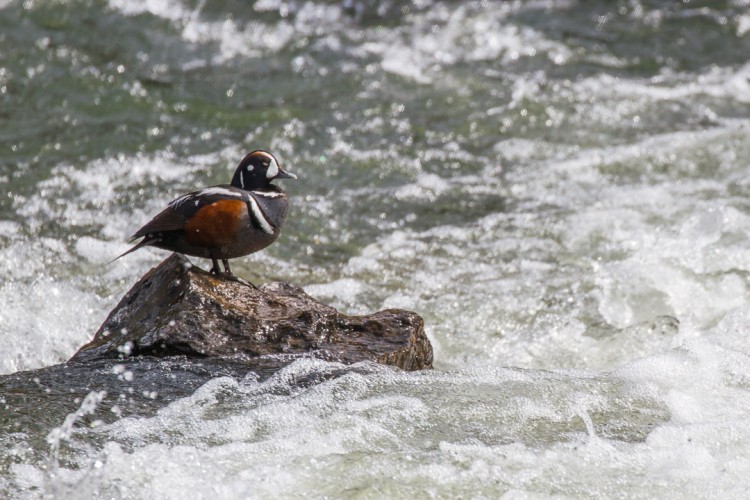
Ospreys are nesting along waterways in Grand Teton and Yellowstone National Parks, including some of our favorite nests right inside the Grand Canyon of the Yellowstone. Elevated on rock spires near the 306 foot tall Lower Falls of the Yellowstone River, these nests make for some spectacular real estate! Using our brand new Maven Spotting Scopes we get an intimate look into the nests from above, and should be viewing baby chicks in the next two weeks.
The Fur Flies - Mammals Shed Winter Coats
Unlike the osprey who have returned to Yellowstone and Jackson Hole from the warmth of the gulf of Mexico, Our hooved mammals remained behind, growing thick coats to insulate against the cold. Animals are now shedding winter coats in favor of lighter fur for the warm summer. Bighorn sheep and bison may be the most pronounced and large mats of fur can often be found blowing in the wind.
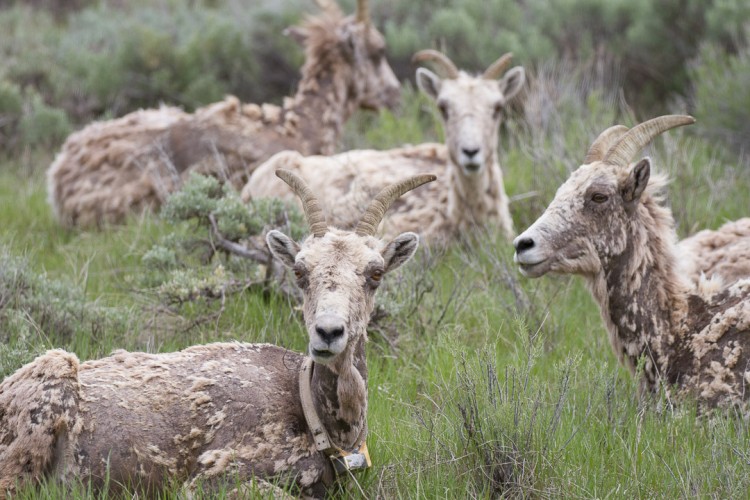
The Transformation to Summer
The Transformation of Grand Teton and Yellowstone National Parks from a winter wonderland to summers playground is nearly complete. June will bring more baby animals, as mule deer and pronghorn antelope appear with fawns in tow. Moisture from the past winter is already fueling a spectacular wildflower season, sure to continue long into the summer months. In August, a total solar eclipse will pass right over Jackson Hole, making our valley an epicenter for eclipse watching enthusiasts and lodging is already full!
This summer promises to be a busy one, full of wildlife sightings and great experiences in Yellowstone and Grand Teton National Parks. To learn more about joining a safari with Jackson Hole Ecotour Adventures visit our website or give us a call at (307) 690-9533. We hope to see you soon!
Photos and blog by Naturalist Josh Metten


